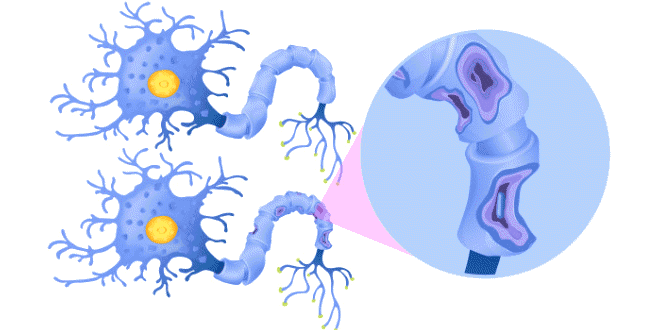Question: Which gland secretes growth hormone in human beings?
Answer: Pituitary gland
Question: Which mechanism control timing and amount of hormone released?
Answer: Feedback mechanism
Question: Define ‘Chemotropism’.
Answer: Chemotropism is a nastic response towards the chemicals like the germination of pollen tube when pollen grain lands on stigma.
Question: What are hormones?
Answer: Hormones are the chemical substances secreted in trace amounts by specialized tissue called endocrine glands.
Question: Name two tissues that provide control and coordination in multi-cellular animals.
Answer: Two tissues that provide control and coordination in multi-cellular animals are:
- Nervous tissue, and
- Endocrine tissue.
Question: What is synapse?
Answer: Synapse in the functional junction between two neurons.
Question: Define ‘reflex action’.
Answer: Reflex action is a sudden, involuntary, spontaneous response to the stimulus that is usually helpful to protect ourselves from any kind of harm.
Question: Name the plant hormone responsible for the promotion of cell division.
Answer: Cytokinin.
Question: Name the sensory receptors found in the nose and on the tongue.
Answer: Olfactory receptors, gustatory receptors.
Question: Give one example of chemotropism.
Answer: The growth of pollen tube towards ovule.
Question: Define neuron. Name the parts of the neuron where:
(1). information is acquired?
(2). impulse must be converted into a chemical signal for onward transmission?
Answer: Functional and structural unit of nervous system / cells specialized for conducting information via electrical impulses from one part of the body to another.
- dendrites
- end of axon
Question: Write two differences between the response of the plants and response of the animals to stimuli?
Answer:
Plants:
- No specific or specialized tissue present for conduction of information.
- Plants cells change shape by changing the amount of water in them.
Animals:
- Specialized tissue are present in the body for conduction of information.
- Specialized proteins found in muscle cells that help in changing shape.
Question: Trace the sequences of events through a reflex arc which occur when a bright light is focused on your eyes.
Answer:
Photo Receptors (in eye) → Sensory neuron → Spinal cord
↓
(Effectors) Muscles in eye (blinking of eye) ← Motor neuron
Question: How does feedback mechanism regulate the hormone secretion?
Answer: The feedback mechanism regulates the timing and amount of hormone to be secreted, e.g., if a person has more sugar in his blood, this is detected by the cells of the pancreas. As a result, more insulin will be secreted to oxidise the sugar. In a reverse situation, the secretion of insulin will be reduced.
Question: What is meant by hydrotropism? Give an example.
Answer: The response of a plant towards water is called hydrotropism. The roots of plants show hydrotropism and they show positive hydrotropism.
Question: Define phototropism and give one example.
Answer: Movement of plant parts towards the light is called phototropism, e.g., stem of plant usually move towards light.
Question: Differentiate between nervous system and hormonal system.
Answer:
- Immediate effect is observed in nervous system as in reflex action.
- Nerve impulse is carried along the neurons.
- Nervous system does not affect growth.
Hormonal System:
- Hormonal effect is slow and delayed. The effect of the hormones are seen after sometime.
- Hormones are transmitted along with the blood-stream.
- Hormones can effect growth.
Question: Tendrils encircle or coil around the object in contact with it. Elaborate.
Answer: Tendrils are sensitive to touch. When they come in contact with any support, the parts of the tendril in contact with the object does not grow as rapidly as the part of the tendril away from the object. This causes the tendril to circle around the object and thus, cling to it.
Question: Sate the role of the brain in reflex action.
Answer: The sensory area of brain receives information, interprets it and makes a rapid decision → message transmitted to motor area → motor neuron sends information to receptor organ → controlled by medulla in the hind-brain.
Question: Name the part of neuron:
(1). Where information is acquired.
(2). Through which information travels as an electrical impulse.
Answer:
- The information is acquired at the end of the dendrite tip of a nerve cell.
- The information travels as an electrical impulse from the dendrite to the body and then along the axon to its end.
 Class Notes NCERT Solutions for CBSE Students
Class Notes NCERT Solutions for CBSE Students





